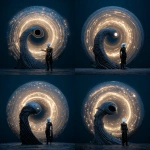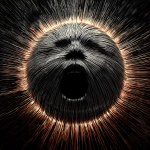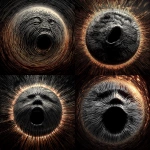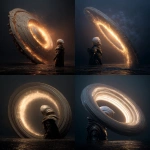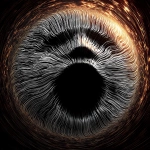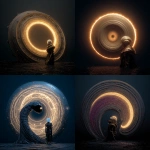Explore the Best AI Image Gallery

Wearable Tech Innovations: Shaping the Future of Creativity
The realm of wearable technology has evolved rapidly over the past decade, impacting various industries, especially the creative sector. From smart clothing to augmented reality (AR) glasses, wearable tech is providing artists, designers, and creators with new tools to enhance their work, express unique perspectives, and push the boundaries of traditional art forms.
The Impact on the Creative Industry
Wearable tech combines functionality and creativity, allowing designers to construct intelligent solutions that can adapt to the wearer's needs. In the fashion industry, designers are integrating sensors and electronics into clothing, enabling garments that can monitor health metrics or change their appearance based on mood or environment. Such innovations are not only practical but also represent a significant shift in how fashion is perceived, moving it closer to the realm of technology and functionality.
Some notable examples include:
- Smart Fabrics: Designers are developing materials embedded with sensors that can change color or shape in response to external stimuli. This capability allows for personalized expression on the canvas of clothing itself, thus transforming how wearers connect with their attire.
- AR Glasses for Artists: Augmented reality glasses, like Microsoft’s HoloLens, enable artists to visualize their work in 3D before committing to a medium. This not only aids in conceptualization but also allows for interactive installations that engage the viewer in unprecedented ways.
- Fitness Trackers in Dance: Dancers are using wearable technology to track performance data, enhancing their routines and allowing choreographers to analyze movements with precision. This data-driven approach fosters improved technique and creativity amongst performers.
Potential Uses of Wearable Tech
The applications of wearable tech in creativity are vast and varied. Beyond fashion and performance arts, industries such as gaming, visual arts, and even literature are tapping into the potential of tech-integrated creativity.
For example, wearable devices equipped with biometric sensors can track emotions and physiological states, which can then be visualized in real-time through digital art or installations. In this way, artists can create works that not only reflect their own state but can also react to the energy of the viewer, making art a living interaction rather than a static experience.
Ethical Considerations
As with any technological advancement, the integration of wearable tech into the creative landscape brings ethical concerns that must be addressed. Some of these considerations include:
- Privacy: Many wearable devices collect personal data, raising questions about how that data is used and who has access to it. Transparency in data handling will be essential to instill user trust, especially in creative fields where the expression of personal identity is paramount.
- Intellectual Property: The collaborative nature of wearable technology and art may lead to disputes over ownership of creations. As artists merge their creativity with tech-driven processes, clear guidelines will be needed regarding intellectual property rights.
- Cultural Appropriation: The rise of tech-savvy fashion and art can lead to concerns regarding the appropriation of cultural symbols and identities. Wearable tech designers and artists must navigate these waters carefully to ensure respect and authenticity in their works.
The Future of Wearable Tech in Creativity
The future of wearable tech in the creative industry is bright, promising a harmonious blend of art and innovation. As the technology evolves, we can anticipate more immersive and interactive experiences that engage audiences in profound ways.
Potential trends might include:
- Integration with AI: The advancement of AI alongside wearable tech could enable real-time feedback and personalization. Artists could receive data-driven insights that inform their creative practice, empowering them to experiment more freely.
- Collective Experiences: By incorporating wearables into social art projects, audiences could experience art collectively, engaging with the work in a shared environment that intertwines technology and community.
- Sustainability: Wearable technologies may also lead to more sustainable practices within the creative industry, allowing for the development of eco-friendly materials that adapt rather than contribute to waste.
Conclusion
The intersection of wearable technology and creativity heralds an exciting era of innovation and expression. As artists and designers continue to explore wearable tech's possibilities, they unlock new dimensions of creativity that redefine art in the twenty-first century. The potential applications, ethical considerations, and trends discussed underscore an ongoing transformation that will shape the future creative landscape.


](https://images.ai-img.art/thumbnails/150/62dee1effeb677492e9eb31757a5d6c9ea9f1010c26733e1980579df8e9fe333.webp)



